How to Identify a Yellow-Breasted Chat
Updated: Apr. 05, 2024
See what a yellow-breasted chat looks like. This colorful bird has a unique way of flying. Plus, learn where you're likely to spot one.
On This Page
Yellow-Breasted Chat Identification
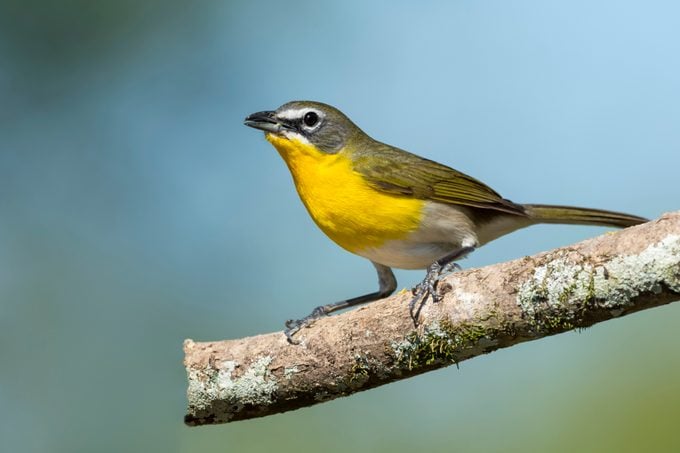
The bright yellow breast of this big-headed bird balances an olive-gray hue on its upper parts. White spectacles and mustache stripes accent its face, and a white lower belly and long tail feathers help in its identification. Males and females are similar in coloring.
Is a Yellow-Breasted Chat a Warbler?
Seven years ago, an exclusive nationwide committee of appointed senior ornithologists made a rare move—migrating the yellow-breasted chat from the warbler family into its own family based on genetic and physical characteristics. Long known scientifically as Icteria virens, the yellow-breasted chat is now alone in a new family, Icteriidae.
According to David Wiedenfeld, senior conservation scientist at the American Bird Conservancy, before that, “People thought they were really weird warblers. The vocalizations and some of their behaviors are different from any other warbler.” Importantly, they are also bigger than warblers.
David finds their flights fun to watch. “They have a characteristic flight display,” he says. “They fly 20 feet above the shrubs and trees and have this floppy butterfly kind of flight—they sort of flutter.” These birds make frequent calls during this flight display, another aspect that sets them apart from warblers.
Learn to identify 25 small yellow birds you might see.
Range and Migration
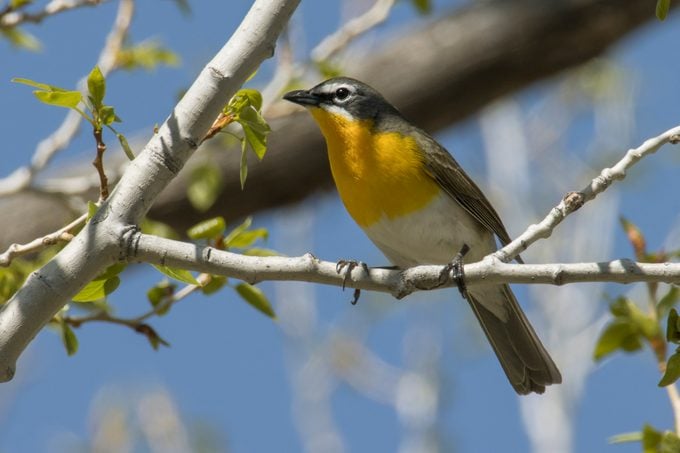
In the summer, chats are widespread in the southern U.S., north to the Great Lakes region and some areas of southwestern Canada. Most migrate south in the fall to spend the winter in Mexico or Central America.
Learn how to identify and attract a yellow-rumped warbler.
Population Numbers
The yellow-breasted chat’s numbers declined by about 32% between the mid-1960s and the late 2010s. But today, the bird is a low concern for conservation. Some states at the northern edge of the birds’ range, such as Connecticut, may consider them endangered, but farther south they are still common.
Have you ever seen a rare yellow cardinal?
Yellow-Breasted Chat Habitat
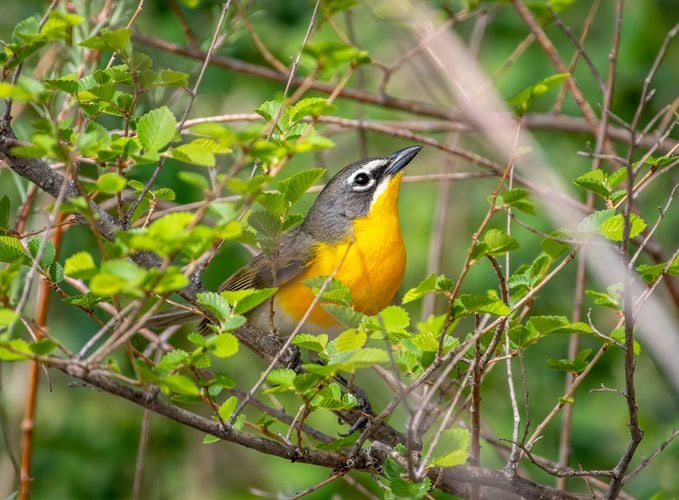
Unless your yard is full of low, thick brush, it’s hard to find this cleverly hidden bird in your backyard. Get permission to walk through old pine plantations and abandoned farm fields, or visit an accessible nature preserve.
Discover fascinating facts about warblers.
Nesting Behavior
According to the Cornell Lab of Ornithology, most males have one mate during breeding season. However, some have two, and studies have shown that females also occasionally mate outside of their otherwise monogamous partnerships. Males also display territorial flights and fights, which include grappling feet, loud thumps and audible wingbeats.
These birds make cute cup nests up to 3.5 inches across and 2.5 inches tall. They reuse abandoned nest sites, but still rebuild. The structure consists of grass, leaves, weed stems, wiry plant stems, pine needles and roots, even hair.
Look and listen for common yellowthroats in spring.
Diet: What Do Yellow-Breasted Chats Eat?
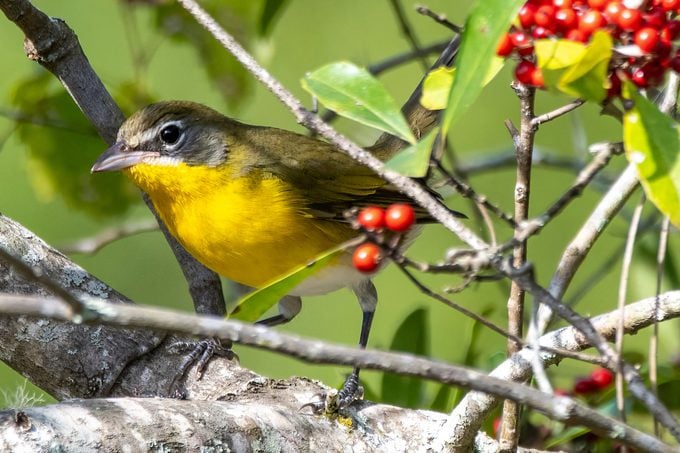
Chats are berry-loving birds. Find them in strawberry, blueberry, blackberry, raspberry or elderberry bushes, or near wild grapes. They also indulge in insects such as bugs, ants, bees, mayflies, cicadas, moths, caterpillars and beetles.
Song and Calls
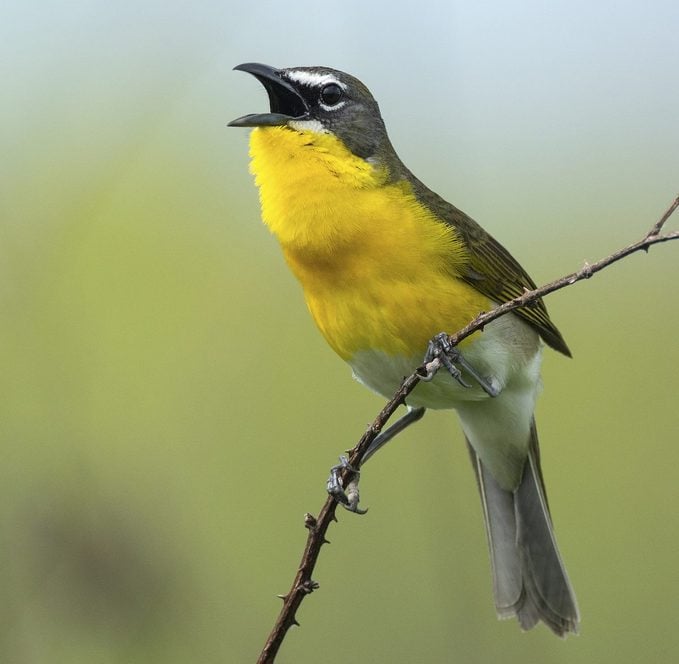
Chats have unmistakable cackles, clucks, whistles and hoots. The American Bird Conservancy quotes ornithologist Arthur Cleveland Bent, who observed “a medley of strange sounds”—catcalls, whistles and various bird notes—“betray the presence of this furtive and elusive clown among birds.”
Bird sounds courtesy of the Cornell Lab of Ornithology
Meet the vireo bird family: sweet summer singers.
About the Expert
David Wiedenfeld is a senior conservation scientist at the American Bird Conservancy. Earning a PhD from Florida State University, his scientific work has focused on prairie-chickens, parasites, and invasive species.
Sources
- Interview: David A. Wiedenfeld
- American Bird Conservancy
- National Audubon Society
- Department of Energy & Environmental Protection – State of Connecticut
- All About Birds


